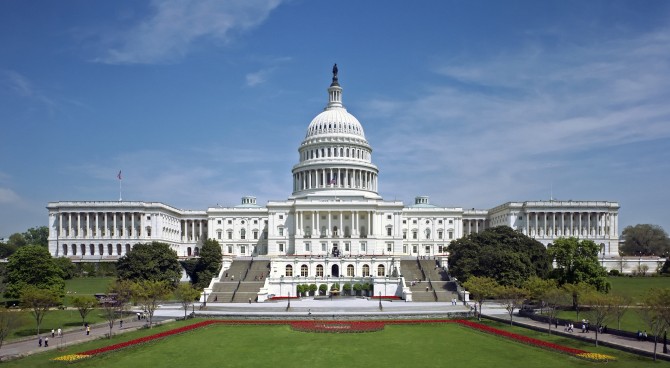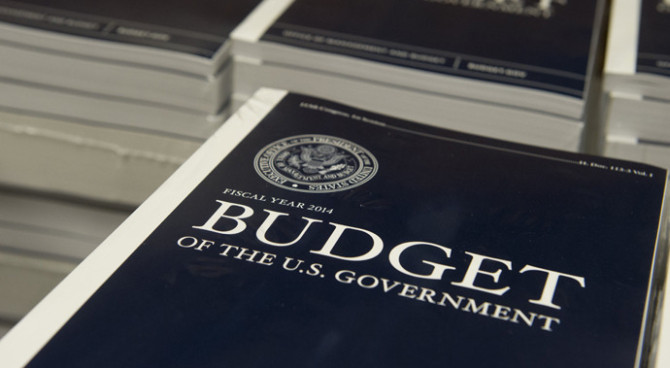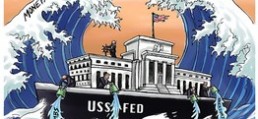Every month that the Fed’s quantitative easing goes on, the exit strategy becomes more difficult and dangerous.
By PHIL GRAMM and THOMAS R. SAVING
With the Senate Banking Committee on Thursday approving Janet Yellen’s nomination to lead the Federal Reserve, her confirmation is virtually assured. Less certain is what Ms. Yellen ultimately intends to do with Fed policy on quantitative easing, now entering its 34th month. She is committed to maintaining QE for now, but does she have an exit strategy? The Fed needs one, because the economic stakes could not be higher.
If we listen to the Fed governors, the potentially explosive increase in the money supply inherent in the current $2.3 trillion of excess bank reserves won’t be allowed to occur. At the first sign of a real economic recovery, the Fed will sell Treasurys and mortgage-backed securities (MBSs) to soak up excess bank reserves, or achieve the same result through repurchase agreements and paying banks to hold excess reserves.
It sounds simple, but in a full-blown recovery the Fed will have to execute its exit strategy quickly enough to keep the inflation genie in the bottle without driving interest rates up to levels that would derail the recovery. And every month that the Fed’s monetary expansion continues, its exit strategy becomes more difficult and dangerous.
To maintain the money supply’s historic relation to GDP, once a real recovery begins the Fed will have to start to divest its $1.4 trillion of MBSs—about a quarter of all MBSs held outside Fannie Mae and Freddie Mac. This would send mortgage rates spiraling, even if the sales were spread over several years.
The challenge is even greater because, under existing regulations, Fannie and Freddie must annually divest 15% of their $1.1 trillion portfolio of assets, 50% of which is made up of mortgage-backed securities. If a real economic recovery is accompanied by a surge in housing sales and an increase in the issuance of new MBSs, the market would be further flooded.
Even if the Fed could sell its MBSs, absorb its losses and withstand the public outcry as mortgage rates soared, its work would not yet be finished. The Fed would still need to move about $600 billion of U.S. Treasurys off its books to reduce excess reserves in the banking system. The effect of these sales would be substantial, since the Fed now finances 62% of the deficit and holds 18% of all marketable Treasury securities. And as a legacy of its “Operation Twist,” the Fed now owns 36% of all Treasury securities with maturities between five and 10 years and 40% with maturities longer than 10 years. Selling this long-term debt would compound market disruption.
There is another complication. The Fed does not mark its assets to market. Every increase in interest rates drives down the market value of its Treasury and MBS holdings and requires the Fed to sell more and more of the book value of its portfolio to lower the monetary base by the required amount, depleting both the Feds asset holdings and earnings. For example, 30-year fixed mortgage rates have risen by 89 basis points since September 2012. Even if MBSs carried on the Fed’s books were worth $100 billion when they were purchased they would sell now for less than $80 billion. The same principles apply to Treasurys where 10-year notes bought at $100 billion in April would today sell for only $90 billion.
Further, in a strong recovery private demand for credit will rise rapidly, pushing up interest rates. A return of interest rates to their postwar norm of 5.9% on an average maturity of five years would over time force the Treasury to pay out an additional $440 billion annually in interest payments, nearly equal to the total amount of annual nondefense discretionary spending, dramatically raising Treasury borrowing.
As the Treasury borrows to meet its interest expense and the Fed sells assets to soak up excess bank reserves, private borrowing will be crowded out and the recovery will start to crater. The pressure on the Fed to stop selling will be immense, but if it does, banks will respond to rising interest rates by making more loans with their excess reserves. The money supply will spike, putting upward pressure on prices.
Fed Chairman Ben Bernanke tells us there is another way to stop the banks from lending out their excess reserves—by increasing the 0.25% interest the Fed now pays on bank deposits it holds. As the Fed pays higher interest on deposits, Fed earnings, the source of the $88.9 billion the Fed remitted to the Treasury last year, will begin to dry up. Treasury borrowing will increase as interest payments from the Fed decline. And interest paid to banks will add to the monetary base and can itself fuel a multiple increase in the money supply.
If the Fed uses its bond holdings as collateral to borrow (a reverse repo) it can lock up excess reserves for a given period of time, but the impact would be the same as paying banks not to lend. Paying banks not to lend or selling repos as rising interest rates choke off the recovery will create a political firestorm. Such a policy would be unworkable over any extended period of time.
Finally, the Fed could simply raise reserve requirements and force the banks to hold the expanded monetary base. However, it’s hard to imagine that reserve requirements could be increased anything like the more than 25 times current levels that might be required to absorb the existing level of excess reserves, without crushing any recovery.
The last time the Fed tried to absorb the excess reserves of the banking system by dramatically raising reserve requirements was in 1936. Then, a less than doubling of reserve requirements helped send the economy back into the depression.
The weakest recovery in the post-war period was bought with a fiscal policy that doubled the national debt held by the public and a monetary policy that expanded the monetary base at a rate not approached in the modern era. The monetary expansion that started as a response to the subprime crisis has evolved into a prolonged and largely unsuccessful effort to offset the negative impact of the Obama administration’s tax, spend and regulatory policies.
Never in our history has so much money been spent to produce so little good, and the full bill for this failed policy has yet to arrive. No such explosion of debt has ever escaped a day of reckoning and no such monetary surge has ever had a happy ending.
Mr. Gramm, a former chairman of the Senate Banking Committee, is senior partner of U.S. Policy Metrics. Mr. Saving is professor of economics and the director of the Private Enterprise Research Center at Texas A&M University.



